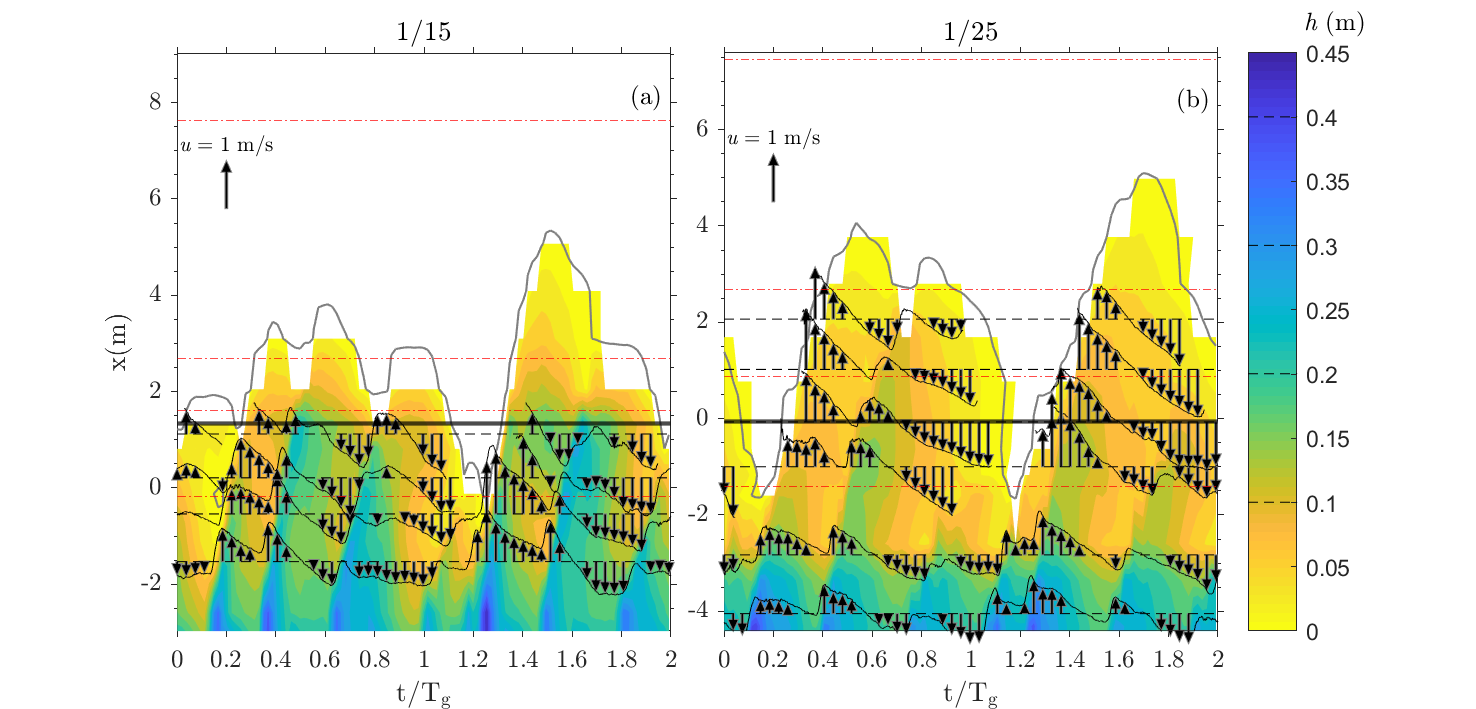D. António1*, J.J. van der Werf1,2, E.M. Horstman1, I. Cáceres3, J.M. Alsina3, S.J.M.H Hulscher1
1 University of Twente
2 Deltares
3 Universitat Politécnica de Catalunya
*corresponding author:
Introduction
The swash zone is the highly dynamic boundary between the beach and the surf zone. Swash processes strongly affect shoreline evolution as they determine whether sediment is either stored on the upper beach or transported offshore. The erosive/accretive nature of a single swash event has been attributed to a combination of several processes such as interactions between the surf and swash zone or local wave-swash interactions occurring in the outer swash. However, the effect of the beach slope on the intra-swash scale dynamics is still unclear. The present research focusses on understanding the effect of beach slope on intra-swash hydrodynamics and sediment transport processes in the swash zone through a series of large-scale wave flume experiments.
Methods
Laboratory experiments were conducted in the large-scale CIEM wave flume at the Universitat Politécnica de Catalunya (Barcelona, Spain). In these experiments erosive bichromatic wave series with groups of 4 waves (equivalent to random time series with Hs=0.65 m and Tp=3.5s) were produced in consecutive runs with each wave group repeating every two group periods (TR=2Tg=28s) in order to produce distinct types of swash interactions. The same sequence was reproduced for two different bed slopes of 1:15 and 1:25. The beach profile consisted of medium sand with D50 = 0.25 mm.
Results
Results have shown that the swash zone on the 1:15 slope was shorter with shorter swash excursion and greater water depths, while on the 1:25 slope the swash zone was wider but shallower (Fig. 1). The three types of wave-swash interactions (wave capture, weak and strong wave-backwash interaction) were identified in both slopes but they did not occur at the same cross-shore location. Furthermore, observed velocities indicate stronger wave-backwash interactions on the 1:15 slope. Based on the present results, it is hypothesized that the stronger interactions on the 1:15 slope lead to a net offshore-directed sediment transport, while the weaker interactions on the 1:25 slope lead to a net onshore-directed sediment transport. Intra-swash sediment concentrations are being analyzed to investigate the proposed hypothesis.

Figure 1: Water depths (contours) and cross-shore velocities (vectors) in the swash zone for (a) 1:15 slope and (b) 1:25 slope. The dash-dotted lines in red represent the limits between the upper swash, mid swash, lower swash and inner surf. The solid black line represents the shoreline location.
I. Surname1*, F.N. Another-Surname2 , Y. Next-Surname2
1 University Name, Country; 2 Organization Name, Country
* Corresponding author: mail.name@organization.org


